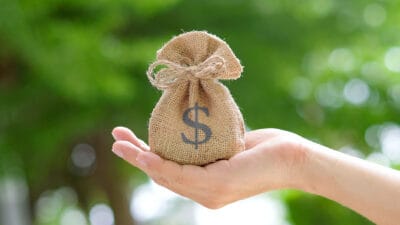Coles Group Ltd (ASX: COL) shares are held by many investors around the country. A large part of Coles' appeal is undoubtedly its reputation as a safe and reliable ASX dividend stock.
Coles has the track record to back this reputation up. This ASX 200 consumer staples share and supermarket operator has delivered an annual dividend pay rise to its investors every year since it was spun out of Wesfarmers Ltd (ASX: WES) back in 2018.
Let's go through them.
So Coles sprung onto the ASX dividend scene in 2019 with a total of 35.5 cents per share in fully-franked dividends.
2020 saw this annual total rise to 57.5 cents per share, despite the impacts of the pandemic at the time.
Then, 2021 had Coles dole out 61 cents per share in dividends, rising again to 63 cents per share last year.
This year, Coles has once again raised the bar, rewarding its investors with 66 cents per share in passive dividend income.
Few ASX 200 dividend shares have been this consistent with raising shareholder income over this period. So it's no wonder Coles has gotten itself a good reputation as a 'safe' income stock.
But all of this reflects the past. To assess whether Coles is indeed a safe ASX dividend stock going forward, we need to examine the company's current finances.
Is Coles a safe dividend stock on the ASX?
Just to be clear, there is no such thing as a truly safe dividend stock. No company is under any obligation to pay any sort of dividend to its investors. Just because the company has a strong dividend track record, buying Coles shares today doesn't mean that the dividends are certain to keep flowing. Many dividend investors have been caught out with similar assumptions about other companies in the past.
Saying that, Coles has a lot going for it when it comes to dividend stability, as the company's ability to raise its dividends through COVID-ravaged 2020 and 2021 demonstrates.
At the end of the day, Coles sells food, drinks and household essentials. Those are all products that we all need, rather than want. That gives the company a highly inelastic and stable earnings base from which to pay dividends from.
In the 2023 financial year, Coles brought in 82.3 cents in earnings per share (EPS). Of that 83.2 cents, Coles paid out 66 cents per share in dividends. That gives the company a dividend payout ratio of 79.33%.
In the 2022 financial year, Coles made 78.8 cents in earnings per share and paid out 63 of those cents as dividends. That resulted in a slightly higher payout ratio of 79.95%.
Coles has a policy of paying out between 80 and 90% of its earnings as dividends. As such, it does look like Coles' shareholder income is on a stable trajectory. The slight drop in the company's payout ratio between FY22 and FY23 bodes well for the company's future dividend prospects.
Foolish takeaway
So we can conclude that Coles does appear to demonstrate all of the qualities that a safe ASX dividend stock should demonstrate if shareholders are to expect a consistent income stream.
No one can guarantee this of course. But there is nothing Coles has done in recent years to suggest that its dividends won't keep on flowing for investors going forward. Right now, the Coles share price gives this ASX 200 blue-chip share a dividend yield of 4.24%.








